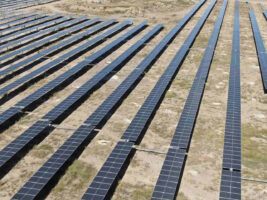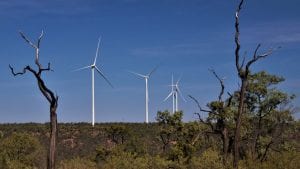With a run of recent summers of below par temperatures, energy pundits have been eagerly awaiting a good summer heat wave to see just how our electricity system would stand up. The big question was what would happen when all those newly installed air conditioners finally got ramped up, once the the la Nina cycle broke and we got a good roasting? Would a return to hotter conditions finally break the trend of declining energy demand over the last four or five years?
Well it looks like we got the summer that would answer these questions, and the answers are no doubt causing a fair bit of head scratching amongst the pundits.
Since the last hot summer in 2010, our electricity system has seen a lot of changes. For one thing, almost 2 gigawatts of distributed generation has been added in the form of domestic solar PV. To put that in context, 2GW represents a touch under 10 per cent of average summer demand, though of course solar PV only produces at near maximum levels for a few hours in the middle of a sunny summer day. However, when solar PV is producing it takes away from the demand for electricity that otherwise would be dispatched across the poles and wires via our National Electricity Market – or NEM.
So with this summer just past setting new records for extreme heat, it’s a good time to point the summer sun on the NEM and see how it is standing up.
With blistering summer heat, particularly across New South Wales and Queensland, there was an expectation we might see new records in peak demand. But despite the weather and the supposed new air-conditioning load, the NEM doesn’t seem to have been pushed very hard at all during this last summer.
In Queensland peak demand was the lowest in five years, down 450 megawatts or almost 5 per cent on 2012 levels.

Average (left) and peak (right) QLD summer demand. Data from AEMO, image by Mike Sandiford.
In New South Wales peak demand was up a massive 1.6 gigawatts from the previous summer but that was no great achievement, since the 2012 peak was the lowest since 2002. In fact the New South Wales peak this summer was almost 700 megawatts below 2011, and came in at only the fifth highest on record.

Average (left) and peak (right) NSW summer demand. Data from AEMO, image by Mike Sandiford.
In Victoria, peak demand came in at 9.1 gigawatts, some 12% lower than the 2009 record of 10.4 gigawatts.

Average (left) and peak (right) VIC summer demand. Data from AEMO, image by Mike Sandiford.
To put these numbers in context we need to take step back in time. Up until about 2008, peak demand was growing at around 3% each year. So back then the expectation was for peak demand to rise another 15% or so by 2013. In Victoria that meant planning for a 2013 peak demand of around 12 gigawatts, some 25% higher than we actually achieved.
The situation is not much different for average summer demand. In Victoria average demand was down 140 megawatts to levels not seen since before 2003. New South Wales was down 200 megawatts to levels not seen since before 2002. In contrast, Queensland did set a new record for average summer demand, up 100 megawatts on the previous summer average high of 2010.
One obvious contributor to the general decline in demand for electricity dispatch by the NEM, and the lack of extreme peaks, is solar PV. Because domestic solar PV is used locally, it reduces demand for electricity dispatched by the NEM across the poles and wires. And because solar PV capacity has been ramped up so quickly, the way it is impacting is readily assessed by comparing this summer daily average demand profile to that of a few years ago. When we do so, the signal of solar PV becomes blindingly obvious, especially in South Australia and Queensland where the domestic solar PV penetration is highest.
As shown below, the parabolic day-time reduction in demand centred on midday is a strong signal of the way solar PV is impacting by cutting more than 10% off midday summer demand in South Australia compared with the summer of 2010. It is also skewing the average demand profile, making it more peaky in the late afternoon, as air-conditioning adds load while PV diminishes in output. It is also clear that solar PV has helped shave some of the peak load, which up until a few years ago was occurring at around 3 pm, and is now pushed back to lower levels, later in the afternoon.

Average summer demand profile by time of day for SA. The left panel shows absolute demand for the last four summers. The right panel shows the percentage change relative to the summer of 2010. Data from AEMO, image by Mike Sandiford.
In South Australia, where about one in four houses now have solar PV installed, there is still capacity for a lot more. It’s salient to ask what would happen to electricity demand if solar PV penetration reached 50% of houses. What it would do, as indicated in the Figure below, is take midday demand down to near the lowest in the 24-hour cycle, effectively creating a second off-peak demand regime.

Projected average summer demand profile by time of day for SA, consistent with a doubling of PV installations out to 2016. The left panel shows absolute demand for the last four summers. The right panel shows the percentage change relative to the summer of 2010. Data from AEMO, image by Mike Sandiford.
Catering for two off-peak periods would make for a big change to our current thinking about how we supply affordable poles and wires electricity to meet the needs of just a few hours of high demand at the beginning and end of each day.
Mike Sandiford is Director, Melbourne Energy Institute at University of Melbourne. He does not work for, consult to, own shares in or receive funding from any company or organisation that would benefit from this article, and has no relevant affiliations.
This article was originally published at The Conversation.
Read the original article.








